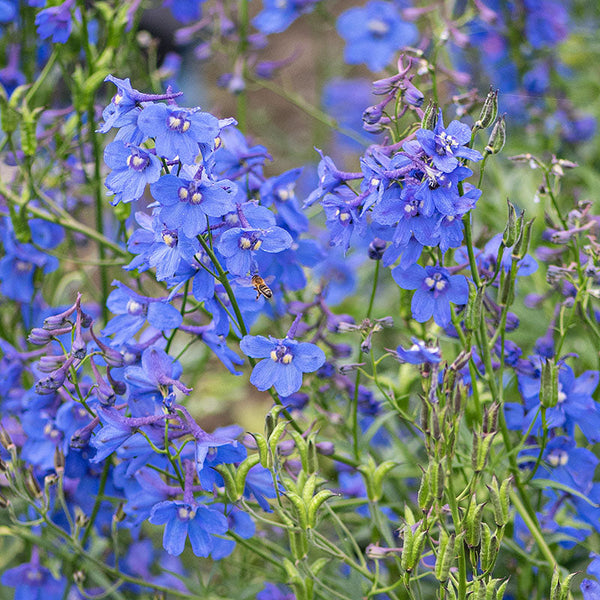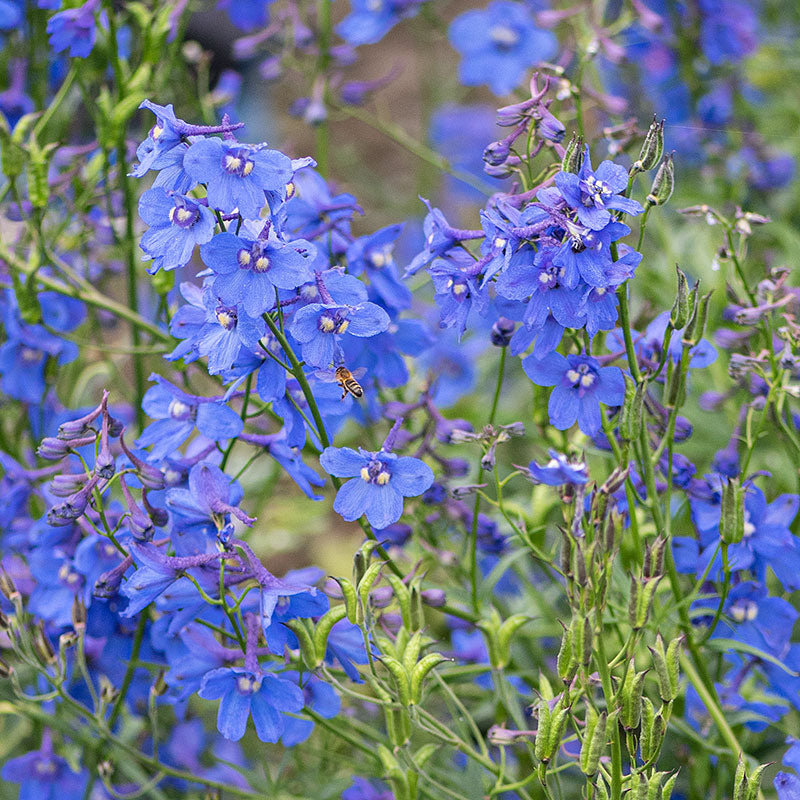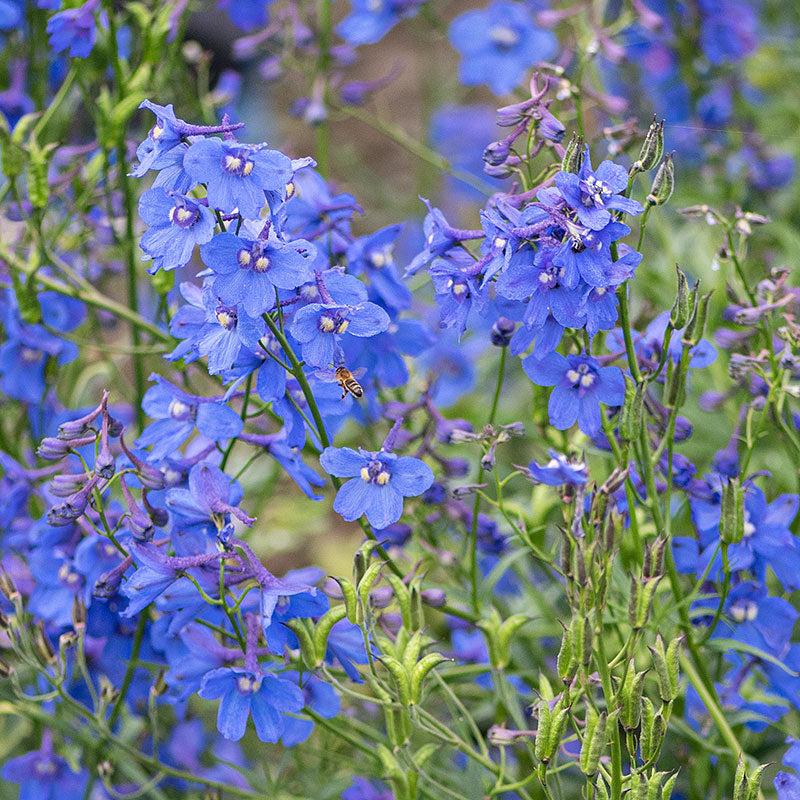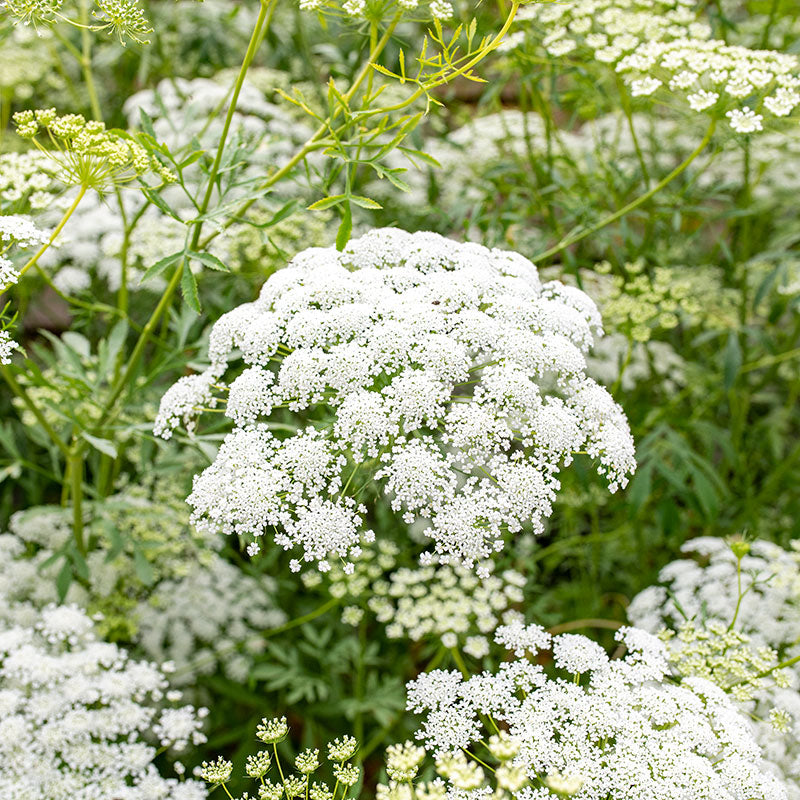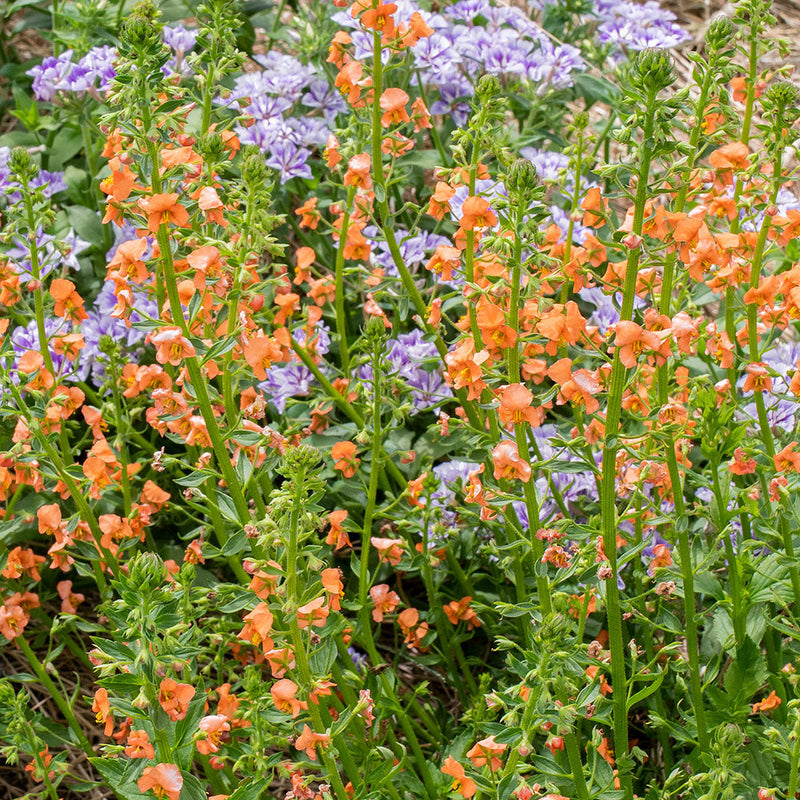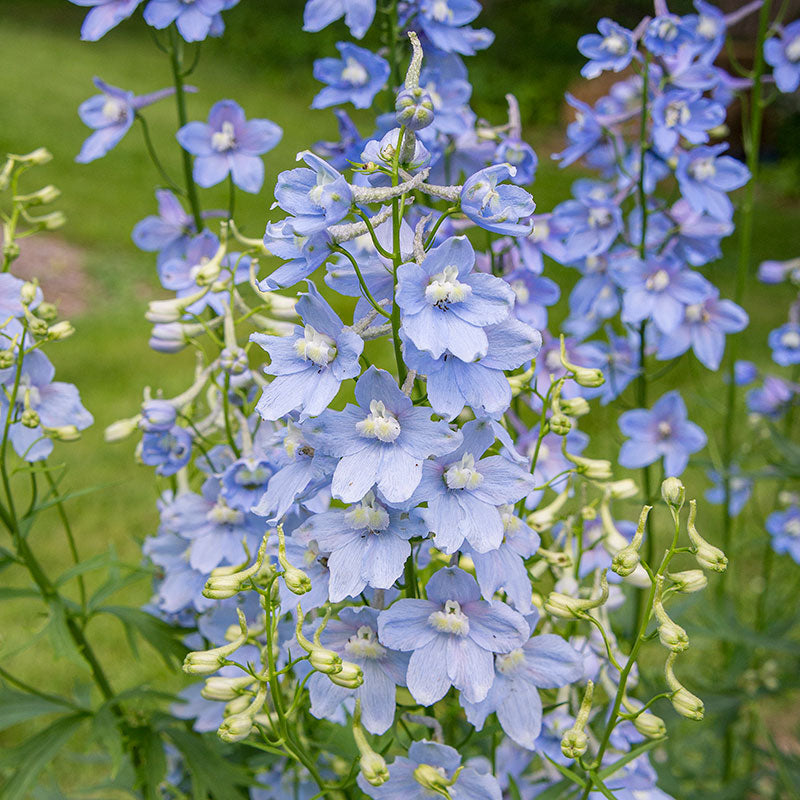SOWING INSTRUCTIONS
Depth:
1/8"; darkness needed for best germination.
Starting Indoors:
Recommended. Start 8-10 weeks before planting out. Sterile germinating mix with vermiculite is the preferred growing medium to prevent fungal problems. Keep at about 65-70°F.
Starting Outdoors:
Direct sow in early summer.
WHEN TO SET OUTSIDE
In spring to early summer
PLACEMENT & CULTIVATION
Delphiniums are the aristocrats of the summer border, especially fine in areas where summer nighttime temperatures drop. They need a sheltered spot away from winds, a tall stake, and plenty of space to grow. Thin established plants to a smaller number of stalks for increased air circulation. Belladonna delphiniums are more graceful in every respect and never top-heavy, so staking may not be necessary. When planting delphiniums, plant them slightly above soil level and mulch around the plant to keep the soil cool. Avoid mulching close to the plant's crown, as this can lead to rotting. After the delphiniums have finished blooming, cutting the central flowering spike down to a side shoot is advisable to encourage the growth of additional wands of flowers. Once frost has arrived and the growing season has ended, cut the plant to the ground and clean up any plant debris. This will help ensure healthy plants in the coming growing season. Caution: all parts are toxic. Be aware of its poisonous qualities when placing in the garden.
Watering Details:
Do not allow soil to dry out. Water regularly, particularly during dry periods, but avoid saturated soils.
Soil pH:
Slightly acidic to slightly alkaline; if soil is very acidic, add lime before planting.
Fertilizer:
Mix in 2-4" of compost prior to planting. Top-dress existing plantings with a 1" layer of compost every spring.
Diseases & Pests:
Prevent fungal problems by planting in a location that has good air circulation. If troubles arise, treat with organic fungicides. Scout for cyclamen mite infestation that causes blackened distorted buds and use miticides if damage is noted. Slugs can damage young plants severely-use non-toxic iron based slug bait around plants.
When to Cut for Bouquets:
Harvest when 1/2 of the florets are open.






























